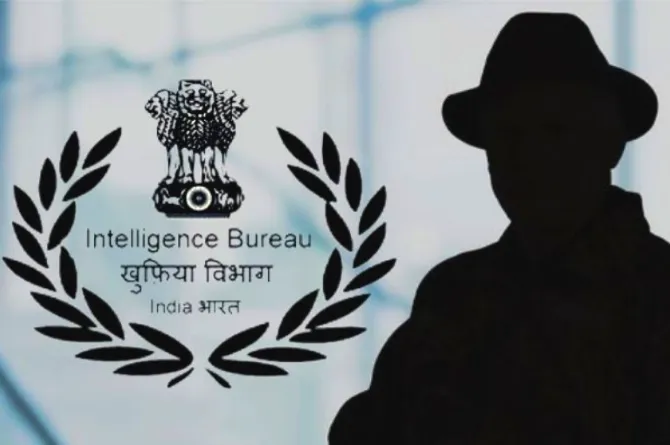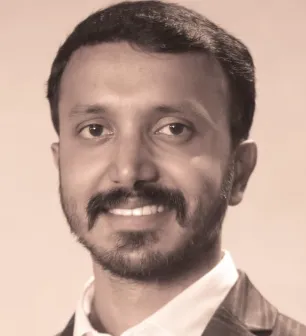Despite the recent allegations, India’s intelligence culture has been characterised by its conflict resolution strategies instead of resorting to targeted killings
On 18 September, Canadian Prime Minister Justin Trudeau raised allegations of an Indian hand behind the killing of a Canadian citizen and Khalistani terrorist, Hardeep Singh Nijjar. Two weeks later, whilst these allegations still remain unsubstantiated, the ongoing developments have provoked global curiosity about India’s intelligence services, especially the Research and Analysis Wing (R&AW). Disregarding expert opinions ascribing the killing of Nijjar to gang rivalry as well as India’s legitimate concerns with separatism, global efforts are focused extensively on examining the R&AW as the current government’s covert killing machine. By extension, unfounded parallels are being drawn with Russian and Saudi intelligence operations. Such analyses are neither an accurate reflection of India’s intelligence culture nor is there any space for targeted killings within it.
Disregarding expert opinions ascribing the killing of Nijjar to gang rivalry as well as India’s legitimate concerns with separatism, global efforts are focused extensively on examining the R&AW as the current government’s covert killing machine.
Intelligence cultures, counterterrorism, and targeted killings
All nations have unique intelligence cultures that are determined by their respective ideas and identities and influence organisational choices, procedures, and policies. For instance, the United States (US) follows a top-down approach, largely attributed to the American “emphasis on theory-driven political practice”. Accordingly, during the Cold War, democratic oversight, technological dominance, and gentlemanly espionage defined American intelligence culture, although there were numerous occasions of overrule. The changing strategic environment post the 9/11 attacks provoked a radical shift. Empowered by the Bush directive that divided the world between ‘us’ and ‘them’ (the terrorists), US intelligence culture grew more militarised, where “tracking and targeting” replaced “hobnobbing with the international community”. With this transformation, there was a growing acceptance of targeted killing as a legitimate tool. Some scholars describe this as ‘norm transformation’—a clear reflection of the top-down configuration of US intelligence culture. The Israeli intelligence, on the other hand, pursues a ‘philosophy of pragmatism’. It follows a bottom-up approach where there is vast scope for initiative and innovation at the junior ranks to develop practical solutions to real-world problems. In this culture, targeted killings are not a subject of norms but are seen as an operational necessity. Discussions in Israel, therefore, are seldom about its legitimacy and often about operations and outcomes. At the extreme end of the spectrum are the authoritarian regimes. Despite numerous differences between them, the use of targeted killings broadly intends to invoke fear among dissidents (or traitors, according to their nomenclature).
Discussions in Israel, therefore, are seldom about its legitimacy and often about operations and outcomes.
Indian intelligence culture falls somewhere in between the American and Israeli intelligence cultures with the fulcrum at the level of the intelligence leadership. Its roots lie in the early years of independence when the Intelligence Bureau (IB) realised that the political strategies for dealing with national security issues were rooted in a sense of idealism, which left an obstructive impact on intelligence operations. Reflecting on this aspect, TG Sanjeevi, the first IB chief, noted that “he frequently had to take independent action without the knowledge of his government”. Successive spymasters have, therefore, enjoyed autonomy in developing and innovating doctrines and operational methods without overruling the broader frameworks laid by the political leadership. In other words, somewhat like the American system, the Indian intelligence services operate within the framework offered by the political leadership, but a high degree of autonomy rests with the intelligence leadership in devising means to tackle national security threats.
Indian strategic preference: Winning hearts and minds
Jawaharlal Nehru’s insistence that the insurgents were ‘our people’ who needed to be reformed and co-opted into the mainstream democratic processes laid the foundation for India’s intelligence doctrine for counterinsurgency. This became the basis for all future operations conducted by numerous intelligence bureaucracies operating in counterinsurgency and counterterrorism. It envisaged a clear divide between winning hearts and minds (soft approaches) and eliminating targets (hard approaches). The former was given utmost importance and the IB was made the nodal agency to achieve these goals. KC Verma, former chief of R&AW and a former IB officer, noted that the IB’s greatest contribution has been its individual officers enjoying “high degree of credibility” with insurgent leaders, which is a result of professionalism and “commendable empathy”. The essence of this model was to take a strategic approach in conflict resolution rather than conflict management. Unsurprisingly, several insurgent movements are now part of India’s political process and no secessionist movement has ever been successful. From an operational point of view, the IB achieved this through the Kautilyan method of conflict resolution, i.e., persuasion, bribery, and trickery (divide-and-rule). The strategy of divide-and-rule received the highest emphasis and has been emulated by other security bureaucracies operating in conflict zones. When the R&AW was created in 1968, a similar operational doctrine was adopted by the agency. The belief was that India’s neighbourhood too had sections that were ‘misguided’ about India’s intentions and ‘misinformed’ about India’s security concerns, and, therefore, needed to be co-opted. This led to the agency’s core responsibility being, besides development of strategic intelligence, maintaining leverage over key sections within the neighbour’s polity and civil society aimed at facilitating pro-India policies.
Unsurprisingly, several insurgent movements are now part of India’s political process and no secessionist movement has ever been successful.
Pursuing this “winning-hearts-and-minds” objective, the R&AW’s psychological warfare (PSYWAR) division has remained one of its most active organs. The earliest operations were seen during the Indo-Pakistani War of 1971 when it played a critical role in exposing the Bengali trauma to Europeans and North Americans. The hope was that international public opinion would positively shape their countries’ foreign policy. Later, as trouble began in Punjab and Kashmir, the PSYWAR division remained active in countering Pakistani propaganda internationally by soliciting support from the subcontinental diaspora across the world. Since then, the R&AW stations in Western capitals have operated on twin mandates. First, to establish long-lasting relationships with the Indian diaspora aimed at fostering positive bilateral relations. Second, to monitor and penetrate and manipulate sections within the diaspora that support separatist movements in India. The agency’s successful turning of Ripudaman Singh Malik into an Indian asset is a case in point on the latter.
Targeted killings: A necessity induced aberration, not a rule
Yet, counterterrorism, especially when state-sponsored, becomes a complex challenge immune to the ‘penetrate-and-manipulate’ strategy. More so, when intelligence agencies were expected to predict and deter every potential terrorist threat amidst political restraint for active measures, the agencies have had to innovate. In this context, one can observe that Indian intelligence agencies extend the divide-and-rule strategy to eliminate hard targets. An example of this is the employment of former militants under the leadership of Kukka Parray in Kashmir during the early 90s. More subtle examples of the Indian intelligence turning a blind eye to inter-group rivalries resulting in killings can be observed in the Northeast insurgencies. Yet, when taking a bird’s eye view of India’s counterterrorism experience, reliance on influence operations vastly overpowers instances of bloodshed. To quote former R&AW officer, B Raman, “a mix of firm action on the ground to demonstrate that terrorism does not and will not pay [and] a healing touch in dealing with alienated sections” is India’s approach to counterterrorism.
More subtle examples of the Indian intelligence turning a blind eye to inter-group rivalries resulting in killings can be observed in the Northeast insurgencies.
At the core of this approach lies an effort to expose state sponsorship of terrorism and co-opt influential targets to work for India, which has remained the prime task of Indian spooks. Whenever episodes of eliminating jihadists or criminals in India’s neighbourhood have occurred, it has only represented the intelligence agencies’ frustration at the respective governments’ inability to take decisive action against troublemakers. Such operations have never been executed in regions beyond the neighbourhood. Caught in a political storm created by Trudeau’s unjustified allegations and actions, the Indian government has resorted to serving dossiers of wanted criminals and separatists residing in Canada. This is in line with India’s traditional response to state-sponsored terrorism, i.e., generating international exposure. Therefore, India’s intelligence culture has historically been characterised by its conflict resolution strategy that persuades, bribes, and manipulates targets into becoming national assets. This has been consistent both within India and abroad. Violent measures are an aberration aimed at hard targets and have no precedence beyond its neighbourhood. Irrespective of the regime in power and the ideology espoused, Indian intelligence services have always been attentive to national security needs. They have indeed enjoyed greater operational freedom under select governments, which includes the current one. However, this freedom does not automatically signify an overhaul in its culture. Most certainly, the intelligence services have never lost the distinction between terrorists and dissidents, unlike some commentators are suggesting. Such conclusions require concrete evidence, not prejudiced opinions, and circumstantial assessments. In short, Indian intelligence culture is more complex and durable, and prioritises India’s national security requirements over ideologies.
Dheeraj Paramesha Chaya is a lecturer in intelligence and security at the Department of Criminology, University of Hull, United Kingdom












